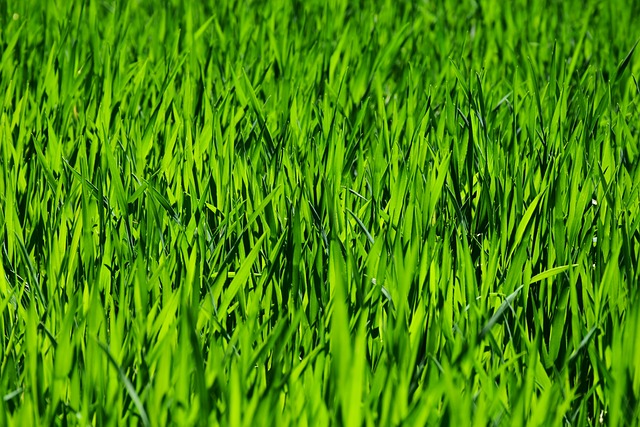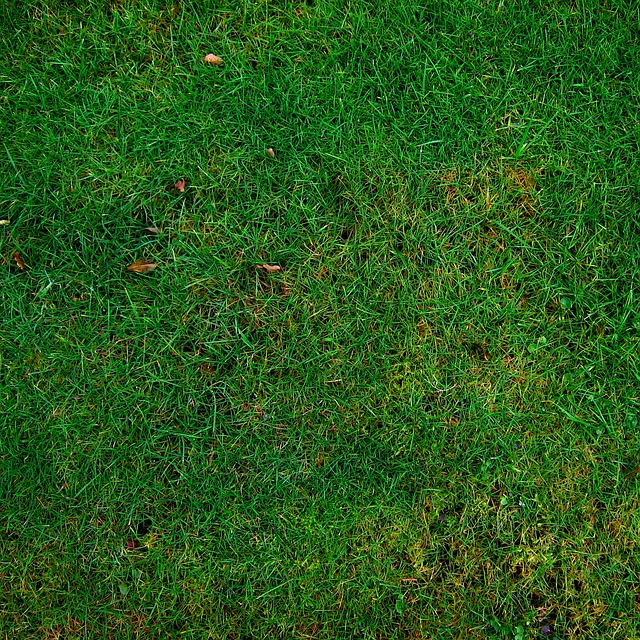To maintain a lush and healthy lawn through effective lawn care and landscaping, it's crucial to install an efficient irrigation system tailored to your yard's unique conditions. This involves careful planning of the layout, selecting high-quality components that match your property's terrain and water source, and choosing the right irrigation zones for different plant species. Opt for durable heads, pipes, and valves compatible with your pressure system, and consider precision watering methods like drip or micro-irrigation for smaller plants, and rotary or spray nozzles for larger areas. For environmental responsibility and water conservation, a rain sensor is a smart addition to modify the irrigation schedule based on real-time weather data. Regular maintenance post-installation is key to ensure the system functions optimally, with routine checks for leaks or damage, seasonal adjustments, and cleaning of filters and sprinkler heads. For sustained performance and further lawn care optimization, consider professional evaluations and adhere to water-wise principles and eco-friendly practices. By following these guidelines, you'll achieve a sustainable landscaping solution that complements your property and supports a healthy, green environment all year round.
title: Mastering the Art of Irrigation: A Comprehensive Guide to Enhancing Your Lawn Care and Landscaping with an Efficient System
An optimally functioning irrigation system is the backbone of any thriving landscape. It ensures that your lawn receives the right amount of water at the right time, fostering lush greenery and vibrant plant life. This article demystifies the process of installing an efficient irrigation system tailored to your yard’s unique needs. From understanding the critical components of a successful installation to adopting post-installation tips and maintenance strategies, we guide you through each step with a focus on enhancing your lawn care and landscaping practices. Whether you’re a seasoned gardener or new to landscape management, this guide offers valuable insights to keep your outdoor spaces flourishing.
- Understanding the Essentials of Irrigation System Installation for Optimal Lawn Care and Landscaping
- Step-by-Step Guide to Installing an Efficient Irrigation System for Your Yard
- Post-Installation Tips and Maintenance Strategies to Maintain a Lush Landscape with Your New Irrigation System
Understanding the Essentials of Irrigation System Installation for Optimal Lawn Care and Landscaping

When embarking on the installation of an irrigation system for your lawn care and landscaping needs, it is crucial to consider the layout, water source availability, and the specific requirements of your outdoor spaces. A well-designed irrigation system ensures efficient water distribution, promoting a lush, healthy lawn without unnecessary water waste. Begin by assessing your property’s topography, identifying areas with full sun or shade, and understanding the soil composition. This will help you tailor the irrigation zones to accommodate diverse plant needs.
Selecting the right components for your system is also key. Opt for quality heads, pipes, and valves that are appropriate for your pressure system and can handle the flow rates required for your landscaping. Consider using drip or micro-irrigation for shrubs and flower beds to deliver water directly to plant roots, while rotary or spray nozzles are better suited for grassy areas. It’s wise to integrate a rain sensor to automatically adjust the irrigation schedule, thus conserving water and adhering to environmental best practices. With careful planning and attention to detail, your irrigation system installation will contribute significantly to optimal lawn care and landscaping, ensuring your outdoor spaces remain vibrant and thriving throughout the year.
Step-by-Step Guide to Installing an Efficient Irrigation System for Your Yard

To cultivate a verdant, thriving lawn, installing an efficient irrigation system is a pivotal step in your lawn care and landscaping efforts. Begin by meticulously assessing your yard’s topography and water needs. This will guide the layout of your irrigation system for optimal coverage and minimal waste. Select high-quality components that are designed to conserve water, such as drip emitters for targeted hydration or sprinkler heads for broader areas. Plan your system layout with precision, accounting for each zone’s specific requirements.
Once you have a clear plan, it’s time to initiate the installation process. Start by marking out the trenches where pipes will be laid. Use a trenching tool or shovel to carefully excavate the designated areas, ensuring not to disrupt existing utility lines. Install the main water supply line first, connecting it securely to your home’s water source. Then, branch off into sub-mains and finally to individual emitters or sprinkler heads. Ensure each component is properly sealed to prevent leaks. After laying the pipes, backfill the trenches with soil, gently compacting as you go to avoid future pipe movement. Finally, install the control system, which will allow for manual or automated watering schedules tailored to your lawn’s specific needs. With each step, prioritize quality and efficiency in your landscaping endeavors to maintain a lush, healthy lawn with minimal water usage. Regular maintenance checks will further ensure your irrigation system operates at peak performance throughout the seasons.
Post-Installation Tips and Maintenance Strategies to Maintain a Lush Landscape with Your New Irrigation System

After installing a new irrigation system, maintaining it properly is key to ensuring your landscape remains lush and vibrant. To begin with, regularly inspect your system for any leaks or damaged components, as prompt detection can prevent water waste and ensure efficient operation. It’s advisable to conduct these inspections after significant weather events to address any issues that may arise from harsh conditions. Additionally, adjust the irrigation schedules seasonally, considering the changing precipitation patterns and plant water needs throughout the year. By utilizing weather-based sensors, you can further optimize your system’s performance, adapting to local climate data for precise watering.
For long-term maintenance, keep records of repairs, adjustments, and any upgrades made to your system. This documentation will assist in identifying trends or recurring issues, allowing for proactive rather than reactive maintenance. Regularly cleaning filters and sprinkler heads is also crucial; this not only prevents clogging but also ensures that water is distributed evenly across the landscape. Employing a professional landscaping service for periodic evaluations can provide additional insights into system performance and suggest improvements to enhance efficiency and effectiveness. By committing to these post-installation tips and maintenance strategies, your lawn care routine will be bolstered, promoting a healthy, green environment that complements your property’s aesthetic appeal. Remember to use water-wise practices and eco-friendly products when maintaining your system, contributing to sustainable landscaping solutions.
Effective irrigation systems are key components for any homeowner aiming to achieve a thriving lawn and vibrant landscaping. This article has outlined the fundamental aspects of installing an efficient irrigation system, offering a comprehensive guide tailored for your yard’s unique needs. By following the provided post-installation tips and adopting proactive maintenance strategies, you can ensure your investment in lawn care and landscaping yields lush, sustainable results all year round. Remember to stay informed on local water conservation guidelines to make your irrigation system as efficient and eco-friendly as possible. With the right approach and consistent upkeep, your landscape will not only flourish but also serve as a testament to environmental stewardship and aesthetic excellence in landscaping.
